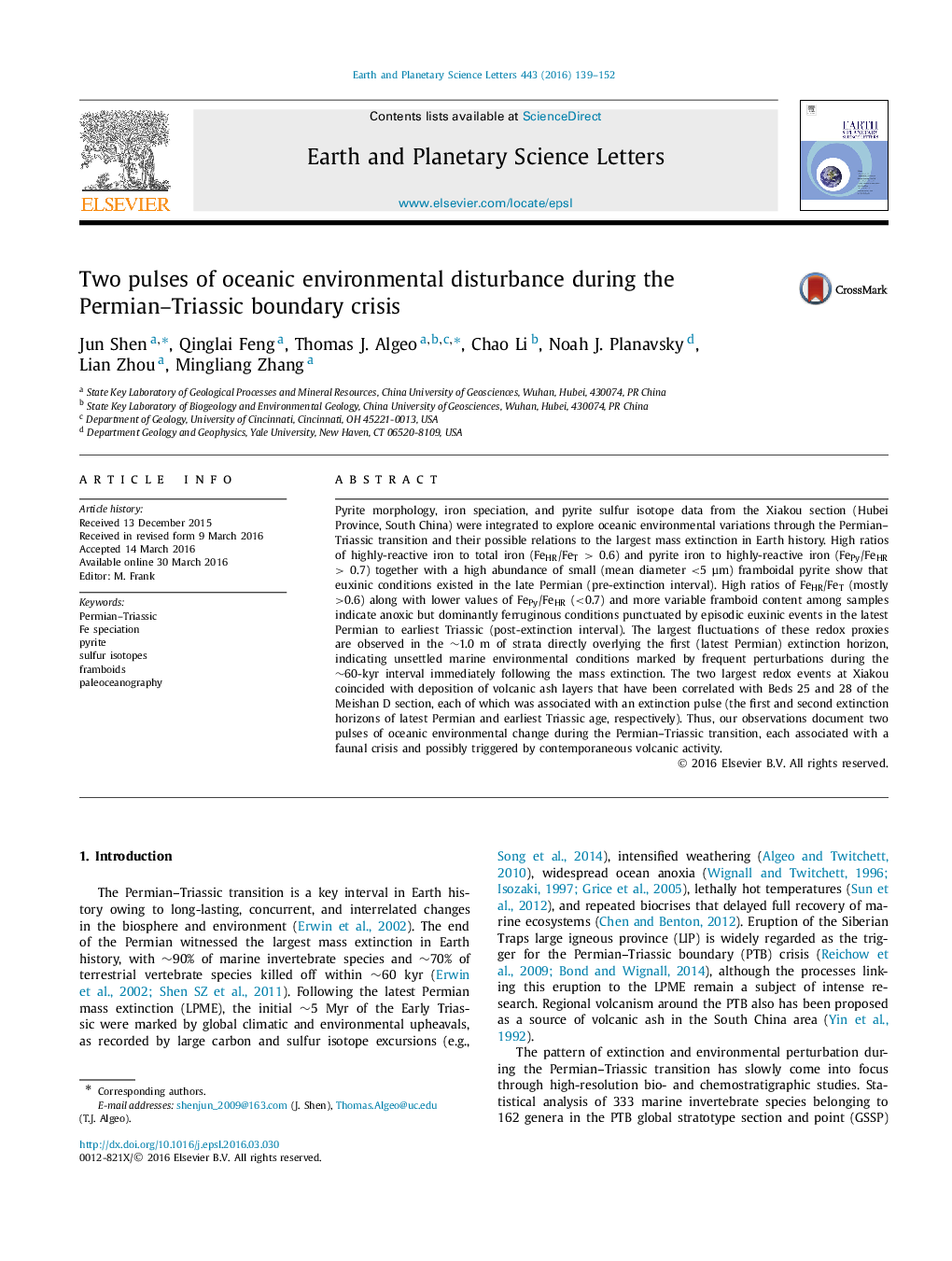| کد مقاله | کد نشریه | سال انتشار | مقاله انگلیسی | نسخه تمام متن |
|---|---|---|---|---|
| 6427436 | 1634713 | 2016 | 14 صفحه PDF | دانلود رایگان |

- Fe-S system was studied in a deepwater P-Tr boundary section (Xiakou, central China).
- Redox conditions changed from stably euxinic to fluctuating during the end-Permian.
- The onset of Fe-S system perturbations preceded the mass extinction by â¼10 kyr.
- Two euxinic pulses coincided with mass extinction episodes and volcanic eruptions.
- These relationships favor volcanism as the trigger for the end-Permian crisis.
Pyrite morphology, iron speciation, and pyrite sulfur isotope data from the Xiakou section (Hubei Province, South China) were integrated to explore oceanic environmental variations through the Permian-Triassic transition and their possible relations to the largest mass extinction in Earth history. High ratios of highly-reactive iron to total iron (FeHR/FeT > 0.6) and pyrite iron to highly-reactive iron (FePy/FeHR > 0.7) together with a high abundance of small (mean diameter <5 μm) framboidal pyrite show that euxinic conditions existed in the late Permian (pre-extinction interval). High ratios of FeHR/FeT (mostly >0.6) along with lower values of FePy/FeHR (<0.7) and more variable framboid content among samples indicate anoxic but dominantly ferruginous conditions punctuated by episodic euxinic events in the latest Permian to earliest Triassic (post-extinction interval). The largest fluctuations of these redox proxies are observed in the â¼1.0 m of strata directly overlying the first (latest Permian) extinction horizon, indicating unsettled marine environmental conditions marked by frequent perturbations during the â¼60-kyr interval immediately following the mass extinction. The two largest redox events at Xiakou coincided with deposition of volcanic ash layers that have been correlated with Beds 25 and 28 of the Meishan D section, each of which was associated with an extinction pulse (the first and second extinction horizons of latest Permian and earliest Triassic age, respectively). Thus, our observations document two pulses of oceanic environmental change during the Permian-Triassic transition, each associated with a faunal crisis and possibly triggered by contemporaneous volcanic activity.
Journal: Earth and Planetary Science Letters - Volume 443, 1 June 2016, Pages 139-152